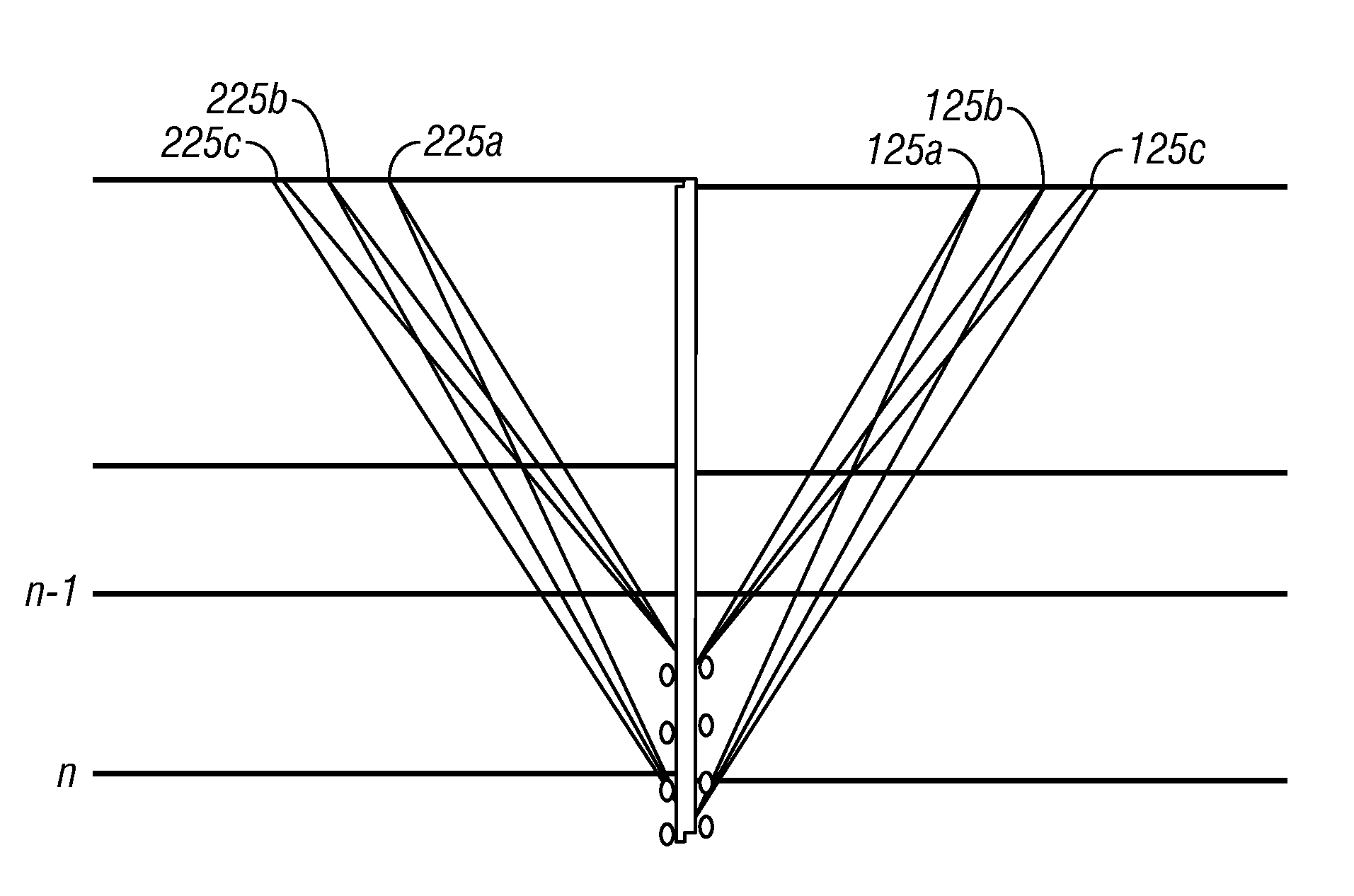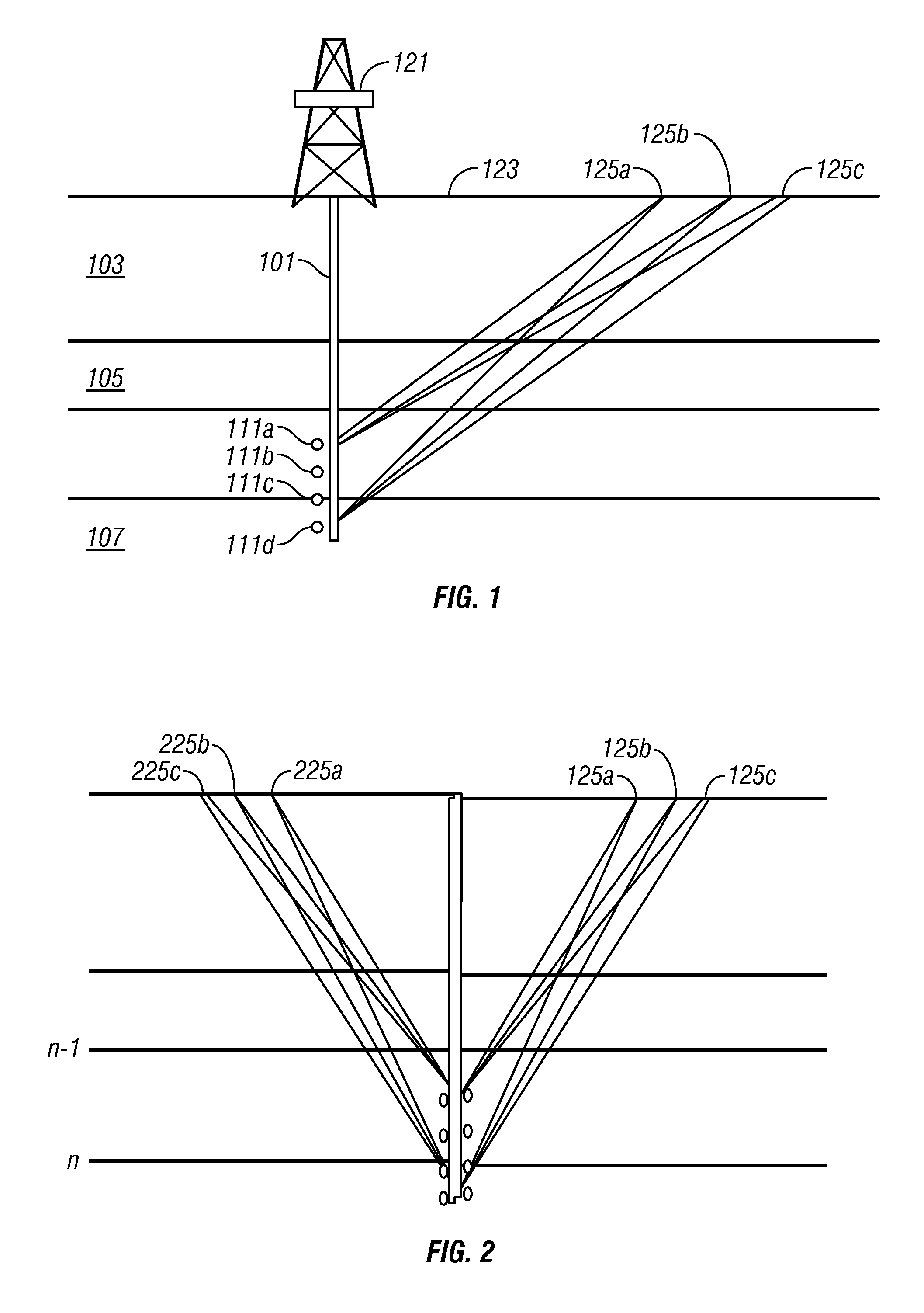Anisotropic Parameter Determination
a technology of anisotropic parameters and measurement methods, applied in the field of geophysical prospecting, can solve the problems of long offsets, difficult determination of anisotropic velocity from surface seismic data using reflected waves, and often suffering in spatial accuracy, resolution and coheren
- Summary
- Abstract
- Description
- Claims
- Application Information
AI Technical Summary
Problems solved by technology
Method used
Image
Examples
Embodiment Construction
[0019]For the present disclosure, the acquisition geometry of a walkaway VSP is illustrated in FIG. 1. Shown therein is the surface of the earth 123 with a rig 121 thereon. This may be a drilling rig or it may be a mast rig which conveys a wireline into a borehole 101. The borehole 101 penetrates layers 103, 105 . . . Positioned in the borehole 101 are seismic sensors denoted by 111a, 111b, 111c, 111d . . . Each of the sensors may include a hydrophone, a single-component geophone or a multi-component geophone. Data for a single offset VSP is typically acquired using a single seismic source such as 125a at the surface (or within a body of water at the surface). Exemplary raypath which depicts the propagation of seismic energy from the source 125a to the detectors 111a and 111d are shown.
[0020]FIG. 2 shows the simulated geometry of a surface seismic survey derived from the walkaway VSP survey of FIG. 1. A vertical borehole has been assumed, the sources have been “reflected” in the bor...
PUM
 Login to View More
Login to View More Abstract
Description
Claims
Application Information
 Login to View More
Login to View More - R&D
- Intellectual Property
- Life Sciences
- Materials
- Tech Scout
- Unparalleled Data Quality
- Higher Quality Content
- 60% Fewer Hallucinations
Browse by: Latest US Patents, China's latest patents, Technical Efficacy Thesaurus, Application Domain, Technology Topic, Popular Technical Reports.
© 2025 PatSnap. All rights reserved.Legal|Privacy policy|Modern Slavery Act Transparency Statement|Sitemap|About US| Contact US: help@patsnap.com



